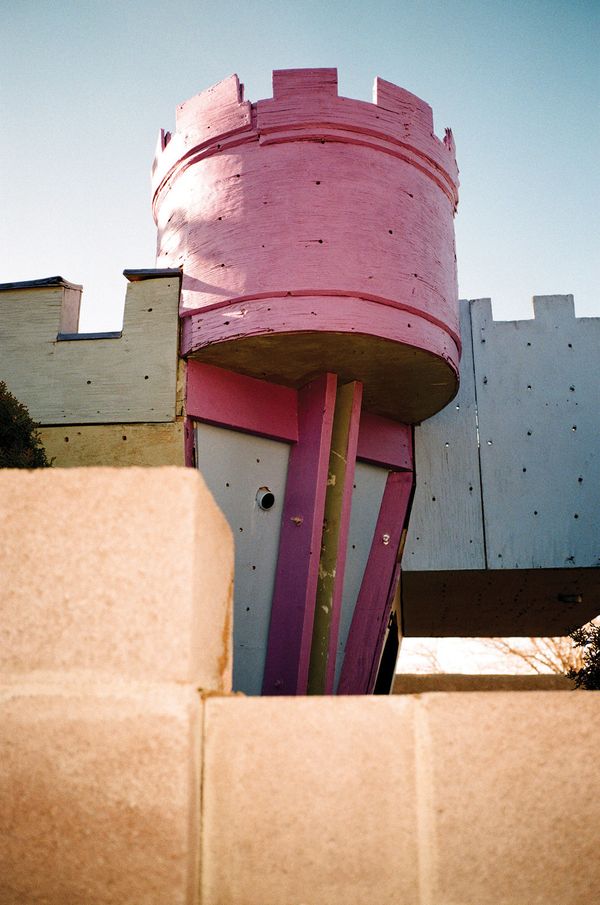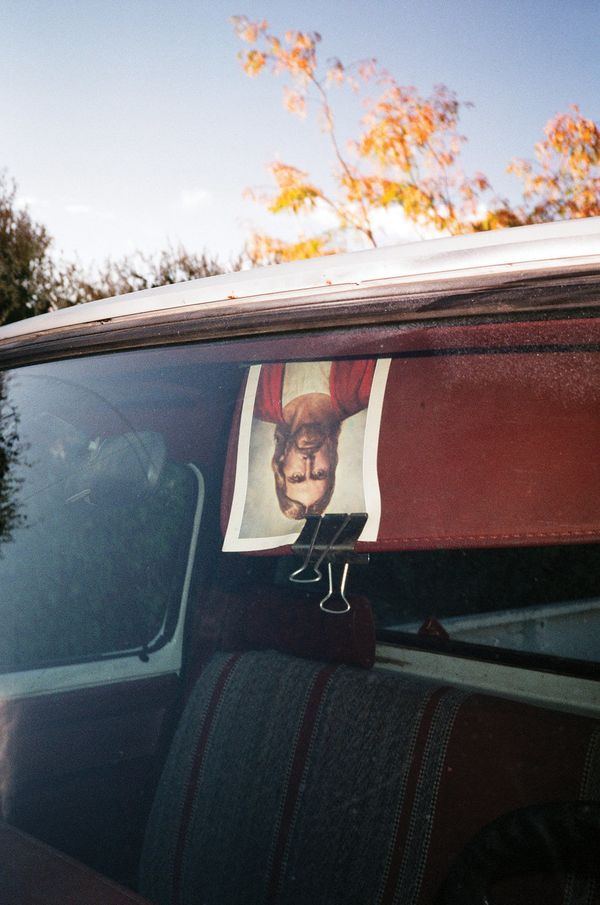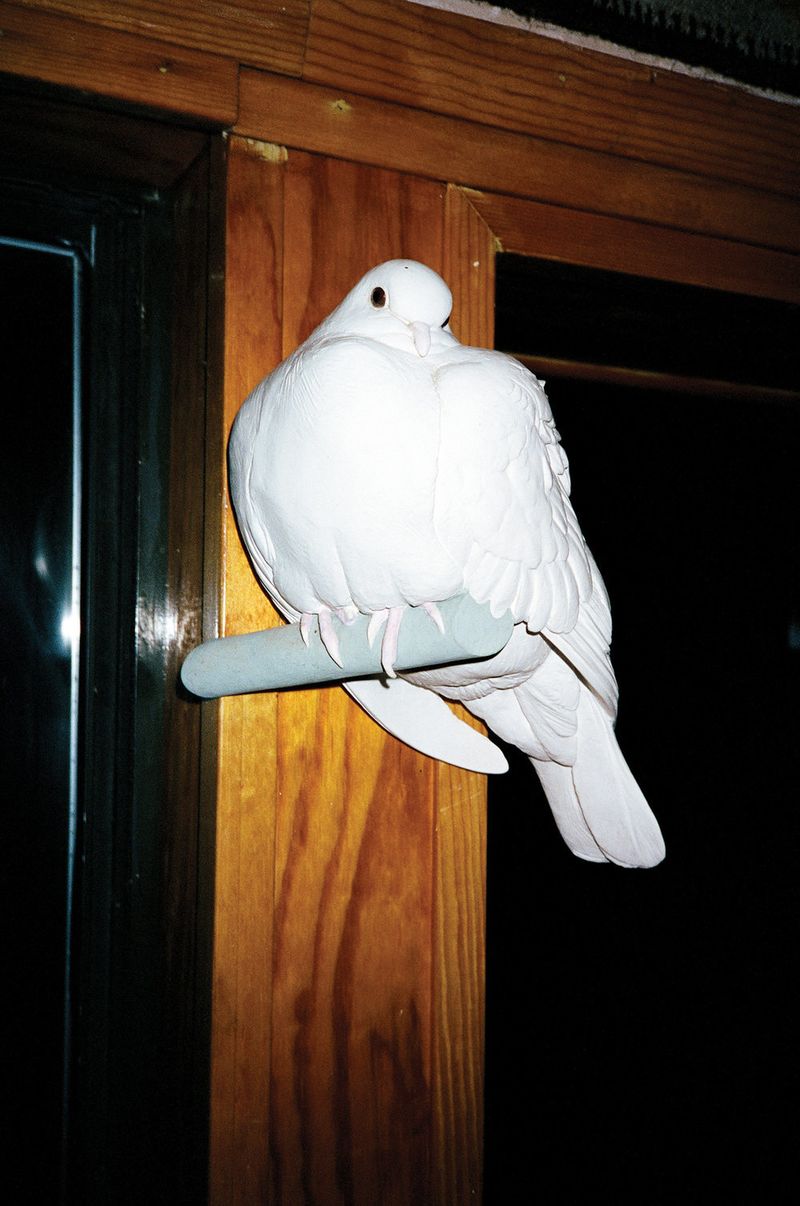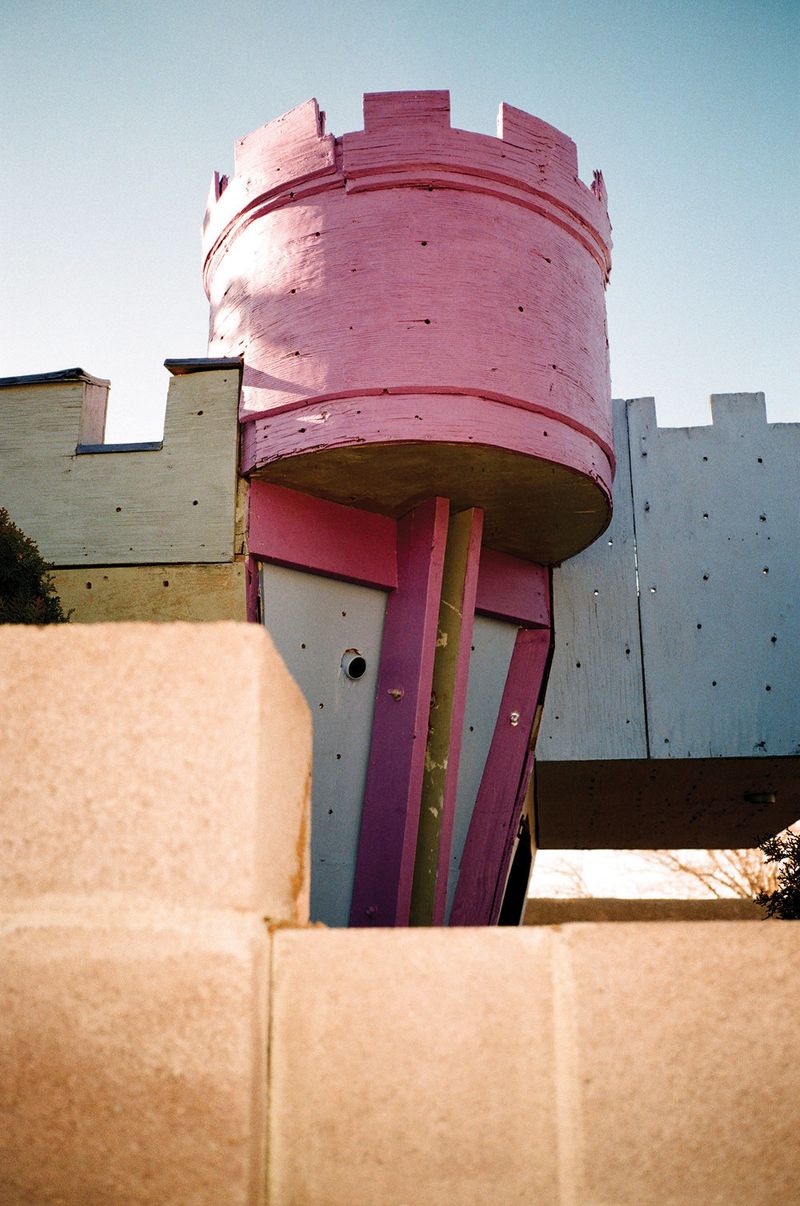A Diary of an Illuminated Dystopia
-
Published10 Oct 2018
-
Author
In his work Arroyo Teardrop, Filipino-American photographer Christian Michael Filardo chronicles the familiar yet otherworldly, leading us to ordinary but uncanny places.
In his work Arroyo Teardrop, Filipino-American photographer Christian Michael Filardo chronicles the familiar yet otherworldly, leading us to ordinary but uncanny places.
The dove wouldn’t fly. In fact, it didn’t even move.
Perched on a door frame - its perfect plumage puffed, its gaze inquisitive - it eventually disappeared with all the rest of the furniture when the landlord cleared the Santa Fe apartment where Christian Michael Filardo’s friend, Carlos, used to live. Filardo was struck by the stuffed animal: a loaded symbol immediately intelligible, here turned into a knick-knack yet semiotically charged. “[It] is such a loaded symbol, but I liked the idea that it’s fake, it’s plastic, and that also seems to have flown away,” he says with a laugh.
This clever duality may be the leitmotif in Christian Michael Filardo’s work: a fine line zigzagging between irony and contemplation. In this clear-minded investigation of his everyday, Filardo switches between an outward and an inward look, adopting an introspective gaze that rekindles the significance of his settings: it stays particular - capturing small details, a pink wooden castle's tower, a painted garage door - becoming a comprehensive emblem of the surroundings.
The project’s name itself, Arroyo Teardrop, stresses the duality of presence and absence: the arroyo is a riverbed; when flash foods make it overflow, its debris scatters. The waters disperse rubble and detritus from its usual settings: something otherwise familiar, our shared experience, transforms into a new truth, awaiting interpretation.
Playing along the lines of the absurd and unpredictable, Filardo’s work circles around the theme of dystopia, visual elements succinctly narrating its anguished nature. A backlit dog, approaching from a slope beyond a wall, exudes a sinister energy as its next moves are unpredictable. Similarly, the electric tail of a cat about to disappear keeps us alert to the next moment beyond the frame.
Humans are absent from Filardo’s chronicles (as in most of his works), and that’s no coincidence: this dystopia eschews warmer interactions; with tones of self-preservation, he focuses on environmental clues, on scarcity and alienation. As he photographs his surroundings - a shadow, animals, artifacts, plants - a certain distance is maintained. “I like the idea of playing with reality and the myth of existence, and what is real and what is not,” he says.
Photographing in New Mexico for three years, Filardo distanced himself from typical southwestern landscape photography, capturing the commonplace as well as the not-so-ordinary. Photography comes naturally to him, the camera always at hand. “I gravitated towards [photography] because of its immediacy, but also because it’s a companion,” he says. A form of therapy, a private record of the mundane, the exotic, the wild. “[It’s] a direct representation of me as a human and my existence on earth,” he says. However, he occupies a subtle perspective, playing with “the idea of a dystopian existing in a dystopian society.”
“[There is] some sort of political stance with my work in regards to being conscious of existing as humans on this planet,” he says. “Societally, we’re pushing boundaries more than before… The future of earth is uncertain.”
Despite the dystopian sentiment, his glance never gives in to the grim: “Beautiful things would remain,” he says. Suddenly, from being an accessory, the flash of his camera becomes a tool for research, brightening what’s isolated and obscure: “There is beauty in darkness, regardless of how you feel about it. There is always something to be illuminated.”
--------------
Christian Michael Filardo is a Filipino-American photographer based in Richmond, Virginia (United States), whose photographic process is centred around using the camera to record the everyday. Follow Filardo on PHmuseum and Instagram.
Lucia De Stefani is a multimedia reporter focusing on photography, illustration, culture, and everything teens. She lives between New York and Italy. Find her on Twitter and Instagram.
--------------
This article is part of the series New Generation, a monthly column written by Lucia De Stefani, focusing on the most interesting emerging talents in our community.





